Latest Politics News
BJP short of majority, all eyes on Governor as JD(S) stakes claim with Congress support
Published
8 years agoon
By

As the BJP emerged as the single largest party by a wide margin in Karnataka but fell slightly short of 113 seats required for a simple majority, the Congress moved quickly to offer unconditional support to Janata Dal (Secular) to prevent the saffron party from forming a government in the southern state.
The JD(S) led by HD Kumaraswamy and Congress wrote to the Governor to stake claim to form government. Later, the BJP also approached the Governor and staked its claim.
Counting was in its final stages for 222 of 224 seats. Two of the seats, RR Nagar and Jayanagar, will have a repoll on May 28.
The tally, including leads, put the BJP at 104 seats, while the Congress at 78 and JD(S) at 37, together have 115. In what is an anomalous situation the Congress got the largest share of 37.9% of vote share, 1.7% than BJP’s 36.2%, but got 26 seats less. That again speaks of the poll management skills of the BJP and its president Amit Shah.
Hectic activity was on in Bengaluru. To start with, JD(S) has accepted the Congress offer, according to media reports. Not that the BJP has given up. News18 reported that BJP leader R Ashok was on his way to meet HD Deve Gowda. More lobbying and wooing was expected to take place.
All eyes are on Governor Vajubhai Vala, an old BJP hand.
While the Congress-JD(S) alliance has the numbers, it has the disadvantage of being a “post-poll alliance” and not a “pre-poll alliance”.
Technically, in the case of a “pre-poll alliance”, the governor would have been duty-bound to call the alliance partners first to prove majority.
That rule, however, was shelved in Manipur, Meghalaya and Goa where the BJP managed to enter into alliances to form government – and held on.
Going by rules, which in all likelihood would be enforced in Karnataka, the governor would call the single largest party – the BJP – for staking claim to form a government, and give it time to face a floor test and prove its majority. Only if loses the floor test can the governor give a chance to the alliance.
The intervening time between forming a government and the floor test provides the BJP to woo legislators and engineer splits or resignations while the alliance partners try to keep their lot together. It would be a no-hold barred situation.
JD(S)’s HD Kumaraswamy has sought appointment from the Governor of Karnataka. In a letter to the Governor, Kumaraswamy said: “This is to inform your good self that I have accepted the support extended by the Indian National Congress party for forming the government. In this regard, I seek your appointment today evening between 5.30 pm to 6 pm.”
BJP’s chief ministerial candidate BS Yeddyurappa said he will consult with Amit Shah and the national leadership to take the next step forward. He was reported to have approached the Governor and staked his claim.
Karnataka Chief Minister Siddaramaiah, who won Badami assembly seat, but lost in Chamundeshwari, tendered his resignation to the Governor, informing him about the Congress tie-up with Congress.
The alliance with JD(S) may help the Congress from completely losing the another state to the BJP which is already ruling 20 of India’s 29 states. The only other states with Congress are Punjab, Mizoram and Puducherry.
The Karnataka results mean a boost for the BJP for its Mission 2019.
While that is about the upper strata. what the results show about the politics on the ground was the effectiveness of BJP, especially its star campaigner Prime Minister Narendra Modi’s communication skill and the power of the ‘issues’ raised by the party.
The Congress failed to exploit dissatisfaction of the unemployed, the rising fuel prices and the farmers’ distress and any of the other failures attributed to the Modi government at the Centre. At the same time, it could not dispel whatever anti-incumbency there was against its own government in the state – though it still managed a higher vote share.
The ploy of wooing Lingayats by recommending that they be given minority status, a long-standing demand of the community – also failed to pay dividends as the Lingayats went with the BJP. Here, bringing in Yeddyurappa seems to have been decisive factor in favour of BJP.
This is evident from the results in last two elections. BJP lost to Congress in 2013 assembly polls when it had dumped Yeddyurappa over corruption charges. It then brought back Yeddyurappa and, in 2014 Lok Sabha, BJP won 17 of the 28 Lok Sabha seats.
The charge of corruption, then, did not seem to have put the people off BJP as they ignored the taint on him as well as the Reddy brothers of mining scam infamy to bring them back convincingly.
Prime Minister Modi campaigned exhaustively in Karnataka in the final leg of the election to ensure his party reclaimed the southern state. His rallies, initially slated to number around 15, were scaled up to 27 later. In each of these rallies, Modi had speeches tailored to the region, paying deference to local cultural icons, and speaking of the party’s commitment to addressing local needs.
The jibes of the BJP and the PM against Congress leaders, especially Rahul Gandhi and Sonia Gandhi do not seem to have been deemed unpalatable by the people.
On corruption, Modi helped get BJP out of its defensiveness due to Yeddyurappa and the Reddy brothers. Considered clean himself, Modi made it a point to say he was fighting against black money and the corrupt; that those who had looted the poor would have to return money; and that moves such as demonetisation were geared towards this end and that is why the Congress opposed it.
He went on the offensive against Congress itself, telling people at a rally in Hubli that Sonia and Rahul Gandhi were out on bail in the National Herald case. He also kept up attacks on Siddarammiah and Congress’s culture of ‘deals’ and alleging it sold tickets.
While Karnataka’s record on social indices wasn’t bad and Siddaramaiah’s selling point was the welfare schemes he had initiated, Modi projected vigorously his own record on welfare and pro-poor initiatives: gas connections, electrifying rural India, toilet construction, health benefits, housing for the poor, opening bank accounts, etc.
The biggest, it would seem, was the Hindu card. The BJP sought to portray the Congress as anti Hindu and pro-minorities. Modi repeatedly alleged that under the Congress government, BJP workers were killed with no action against perpetrators. He pointed out that the Congress was out to divide Hindus and ‘make brother fight brother’, in a reference to the move to grant Lingayats separate a religious status. This ploy seems to have worked here just as it did in some states in the north.
As for the Congress, led by Rahul Gandhi, the party failed to exploit dissatisfaction over a lack of jobs for young people and rising fuel prices along with farmer unrest.
Siddaramaiah was noted for a coalition “AHINDA”, which wove together minorities including Muslims, backward castes and Dalits. However, Scheduled Castes and Tribes (SC/STs), who decide as many as 62 of 224 seats, have broken with the Congress to go to the JDS, in part due to its alliance with Mayawati, a Dalit icon.
The Congress’ hopes belied, it may draw some solace from the fact that in a three-and-a-half-decade trend in Karnataka’s politics, the governments have consistently been voted out.
A last word about the voting percentages. While the Congress tally was way below BJP, it still managed to improve its vote share from 36.6% by 1.3% to 37.9%. The BJP’s increase was larger. In 2013, it polled 19.8% and, adding the votes polled by the Yeddyurappa and Sriramulu factions which are now with the BJP, its vote share five years ago was 32.4%. In the latest election, the Modi-Shah-Yeddyurappa trio have managed to boost that by 3.8% to touch 36.2%
The JD(S) has seen a decline in vote share from 20.2% to 18.4%.
You may like
-
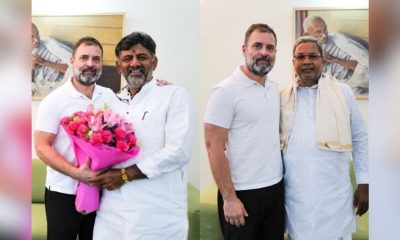

Karnataka CM battle: DK Shivakumar turns down multiple options from Congress as stalemate continues
-
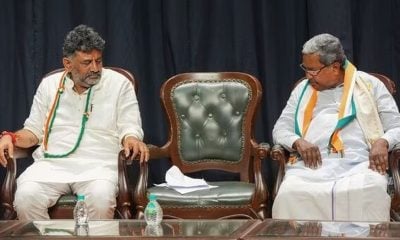

Siddaramaiah to be new Karnataka CM, DK Shivakumar his deputy, claims report but Congress yet to declare
-
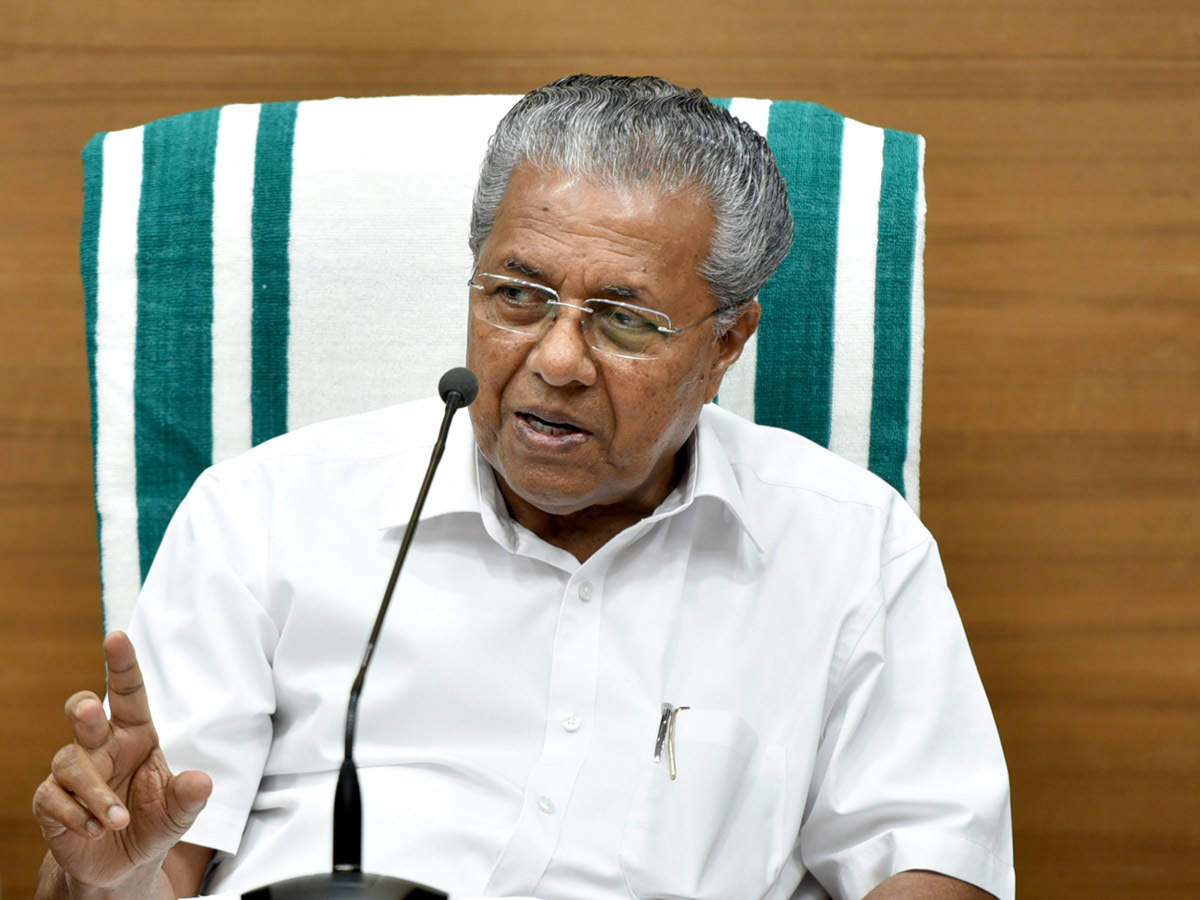

Karnataka gave befitting reply to BJP: Kerala CM Pinarayi Vijayan on poll results
-


Karnataka election results 2023: PM Modi congratulates Congress, promises to serve Karnataka better
-


Karnataka election results: Congress registers thumping win; Love wins over hatred, say leaders
-


Karnataka results: Former CM Bangarappa’s sons face-off in Sorab, Madhu beats elder brother Kumar
India News
Renaming MGNREGA removes core spirit of rural employment law, says Shashi Tharoor
Published
2 days agoon
December 19, 2025
Congress MP Shashi Tharoor has strongly criticised the renaming of the Mahatma Gandhi National Rural Employment Guarantee Act (MGNREGA), saying the move strips the rural employment programme of its core essence. His remarks came after Parliament cleared the Viksit Bharat Guarantee for Rozgar and Ajeevika Mission (Gramin) Bill, also referred to as the VB-G RAM G Bill.
Speaking to media, Tharoor said the decision to remove Mahatma Gandhi’s name from the scheme “takes out the heart” of the rural employment programme that has been in place for years. He noted that the identity and philosophy associated with Mahatma Gandhi were central to the original law.
Tharoor also objected to the way the new name was framed, arguing that it unnecessarily combined multiple languages. He pointed out that the Constitution envisages the use of one language in legislation, while the Bill’s title mixes English and Hindi terms such as “Guarantee”, “Rozgar” and “Ajeevika”, along with the conjunction “and”.
‘Disrespect to both names’
The Congress leader said that inserting the word “Ram” while dropping Mahatma Gandhi’s name amounted to disrespecting both. Referring to Mahatma Gandhi’s ideas, Tharoor said that for Gandhi, the concepts of Gram Swaraj and Ram Rajya were inseparable, and removing his name from a rural employment law went against that vision.
He added that the name of Lord Ram could be used in many contexts, but questioned the rationale behind excluding Mahatma Gandhi from a programme closely linked to his philosophy of village self-rule.
Protests over passage of the Bill
The VB-G RAM G Bill was passed by the Lok Sabha on December 18 and cleared by the Rajya Sabha in the early hours of December 19 amid protests from Opposition members. Several MPs opposed the manner in which the legislation was pushed through, with scenes of sloganeering and tearing of papers in the House.
Outside Parliament, members of the Trinamool Congress staged a sit-in protest near Samvidhan Sadan against the passage of the Bill. Congress also announced nationwide protests earlier this week, accusing the government of weakening rights-based welfare schemes.
Despite opposition criticism, the government has maintained that the new law will strengthen rural employment and livelihood security. The Bill raises the guaranteed employment from 100 days to 125 days per rural household and outlines a 60:40 cost-sharing formula between the Centre and states, with a higher central share for northeastern, Himalayan states and certain Union Territories.
India News
Rahul Gandhi attacks G RAM G bill, says move against villages and states
Rahul Gandhi has criticised the G RAM G bill cleared by Parliament, alleging it dilutes the rights-based structure of MGNREGA and centralises control over rural employment.
Published
2 days agoon
December 19, 2025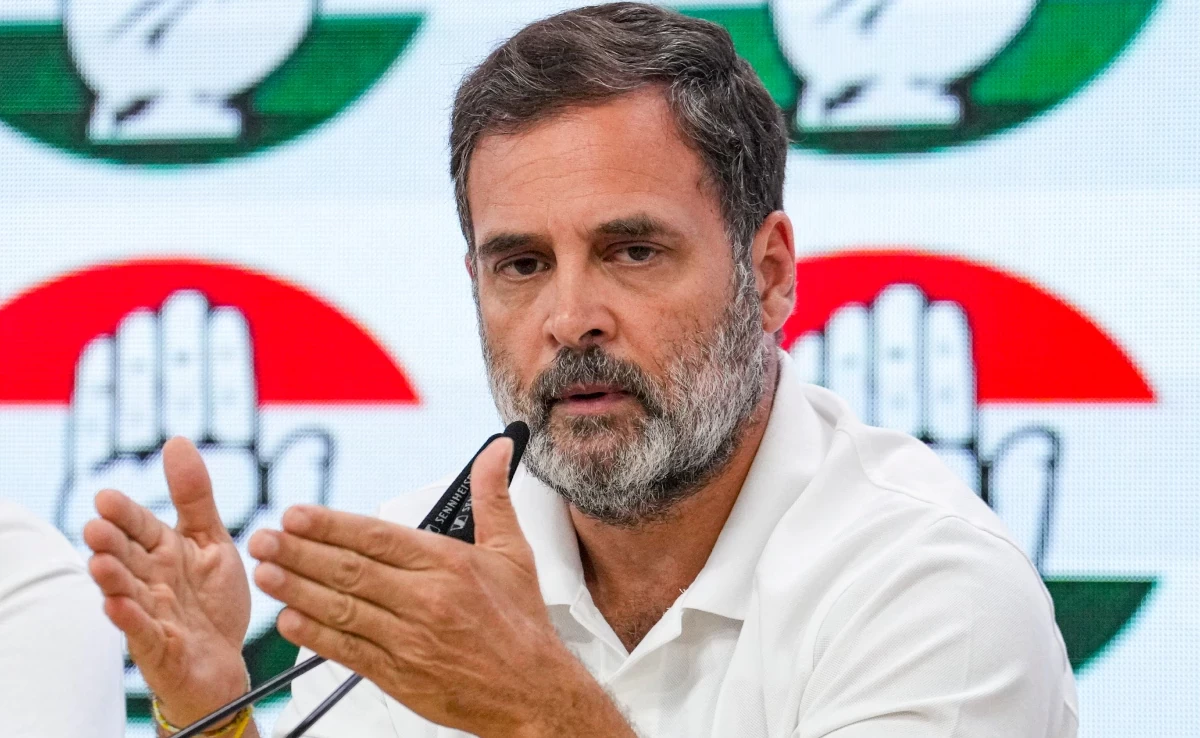
Leader of the Opposition Rahul Gandhi has launched a sharp attack on the Modi government after Parliament cleared the Viksit Bharat Guarantee for Employment and Livelihood Mission (Rural) Bill, commonly referred to as the ‘G RAM G’ bill. He described the proposed law as “anti-state” and “anti-village”, arguing that it weakens the core spirit of the Mahatma Gandhi National Rural Employment Guarantee Act (MGNREGA).
The new legislation, which is positioned as an updated version of MGNREGA, was passed amid protests by opposition parties and is expected to replace the existing scheme once it receives presidential assent.
‘Bulldozed without scrutiny’, says Rahul Gandhi
Rahul Gandhi criticised the manner in which the bill was cleared, saying it was pushed through Parliament without adequate debate or examination. He pointed out that the opposition’s demand to refer the bill to a standing committee was rejected.
According to him, any law that fundamentally alters the rural employment framework and affects crores of workers should undergo detailed scrutiny, expert consultation and public hearings before approval.
Claim of dilution of rights-based guarantee
Targeting the central government, the Congress leader said the proposed law dismantles the rights-based and demand-driven nature of MGNREGA and replaces it with a rationed system controlled from Delhi. He argued that this shift undermines the autonomy of states and villages.
Rahul Gandhi alleged that the intent behind the move is to centralise power and weaken labour, particularly impacting rural communities such as Dalits, OBCs and Adivasis.
Defence of MGNREGA’s impact
Highlighting the role of MGNREGA, Gandhi said the scheme provided rural workers with bargaining power, reduced distress migration and improved wages and working conditions, while also contributing to rural infrastructure development.
He also recalled the role of MGNREGA during the Covid period, stating that it prevented crores of people from slipping into hunger and debt. According to him, any rationing of a jobs programme first affects women, landless workers and the poorest communities.
Opposition to name change and provisions
The Congress has also objected to the renaming of the scheme, accusing the government of attempting to erase the legacy associated with Mahatma Gandhi. Opposition MPs staged a dharna within the Parliament complex, questioning provisions of the bill that they claim dilute the “soul and spirit” of the original law enacted in 2005.
Under MGNREGA, the government guaranteed 100 days of work in rural areas along with an unemployment allowance if work was not provided. The ‘G RAM G’ bill proposes to raise the guaranteed workdays to 125, while retaining other provisions. However, critics have flagged concerns over employment being linked to pre-approved plans.
The bill was cleared after a midnight voice vote in the Rajya Sabha, following its passage in the Lok Sabha amid protests and walkouts. It will become law once approved by the President.
India News
AAP dominates Punjab zila parishad polls, leads in most panchayat samiti zones
AAP has won 201 out of 317 declared zila parishad zones in Punjab so far and is leading in a majority of panchayat samiti seats, with counting still underway.
Published
3 days agoon
December 18, 2025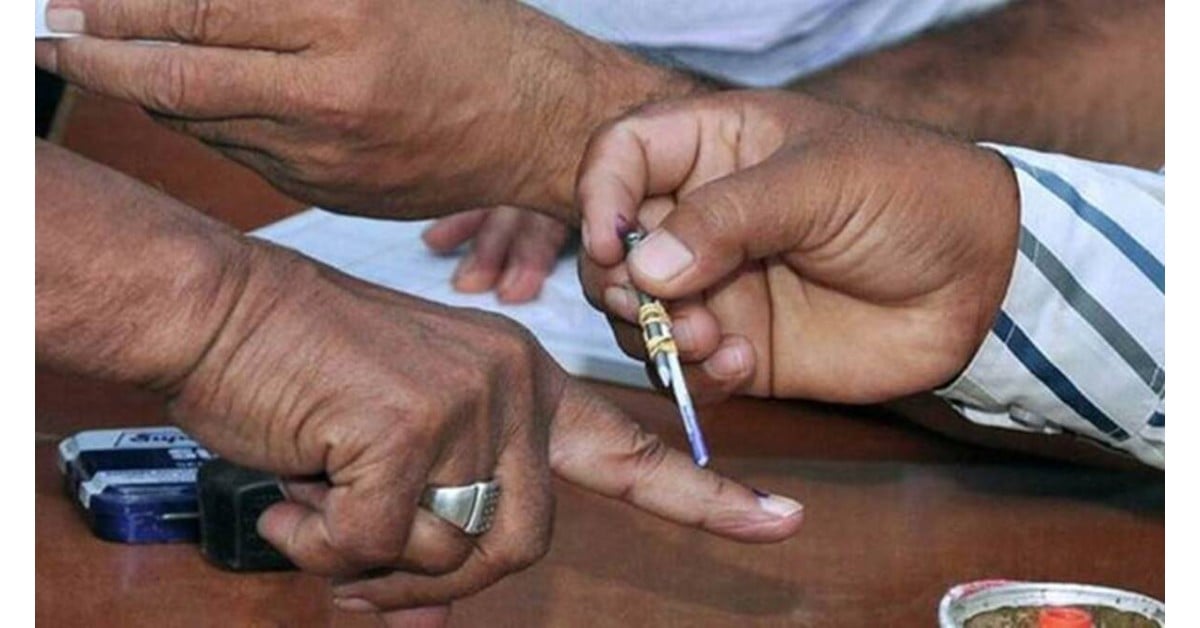
The ruling Aam Aadmi Party (AAP) has recorded a strong performance in the Punjab zila parishad elections and is leading in the majority of panchayat samiti zones, as per results declared so far on Thursday. The counting process is still underway and complete results are awaited, officials said.
Polling for the rural local bodies was held on December 14 to elect representatives across 347 zones of 22 zila parishads and 2,838 zones of 153 panchayat samitis in the state.
AAP secures clear edge in zila parishads
According to the available results, outcomes have been declared for 317 zila parishad zones so far. Of these, the AAP has won 201 zones, placing it well ahead of other parties.
The Congress emerged second with victories in 60 zones, followed by the Shiromani Akali Dal (SAD) with 39 zones. The BJP won four zones, the BSP secured three, while independents claimed 10 zones.
District-wise data shows that the AAP won 22 zones in Hoshiarpur, 19 each in Amritsar and Patiala, 17 each in Tarn Taran and Gurdaspur, and 15 zones in Sangrur. The Congress registered its best performances in Gurdaspur and Ludhiana with eight zones each, followed by Jalandhar with seven zones. The SAD performed strongly in Bathinda with 13 zones, while the BJP managed to win four zones in Pathankot.
AAP leads in panchayat samiti results
In the panchayat samiti elections, trends declared so far indicate that the AAP is leading in a majority of zones. However, officials clarified that counting is ongoing and the final picture will be clear only after all ballot papers are tallied.
Kejriwal, Mann reject opposition allegations
Reacting to the trends, AAP supremo Arvind Kejriwal said the party’s performance reflected strong rural support for the Bhagwant Mann government’s work. Addressing the media in Mohali along with Chief Minister Bhagwant Mann, Kejriwal dismissed allegations of irregularities raised by opposition parties.
He said the elections were conducted in a fair and free manner and claimed that the results so far showed a clear wave in favour of the AAP in rural Punjab. Kejriwal stated that nearly 70 per cent of the zila parishad and panchayat samiti seats had gone in favour of the party.
Congress, SAD question poll conduct
The Congress and the Shiromani Akali Dal, however, accused the ruling party of misusing official machinery. Punjab Congress chief Amrinder Singh Raja Warring alleged that the AAP had “stolen” the rural mandate and claimed that the results did not reflect genuine public support.
Opposition parties had earlier also accused the AAP government of high-handedness during the polling process, allegations that the ruling party has strongly denied.

India announces T20 World Cup 2026 squad, Shubman Gill dropped as Axar Patel named vice-captain

Veteran Malayalam actor and filmmaker Sreenivasan passes away at 69

T20 World Cup 2026: Selectors weigh Shubman Gill role as India squad announcement awaited

Thick smog engulfs Delhi, flights and trains delayed as air quality slips to very poor





